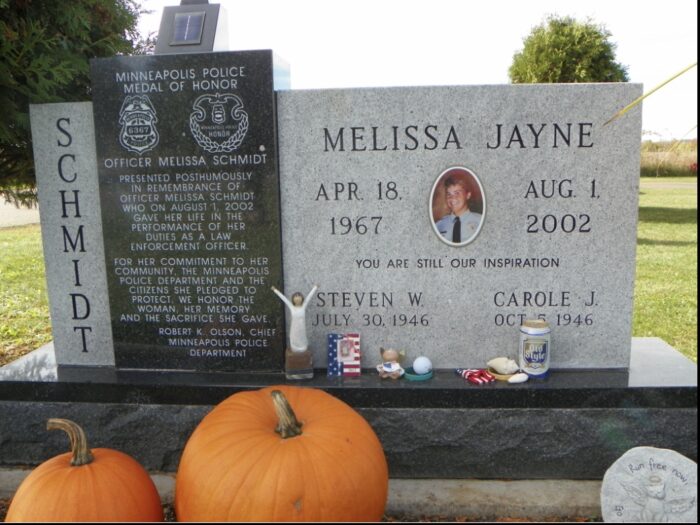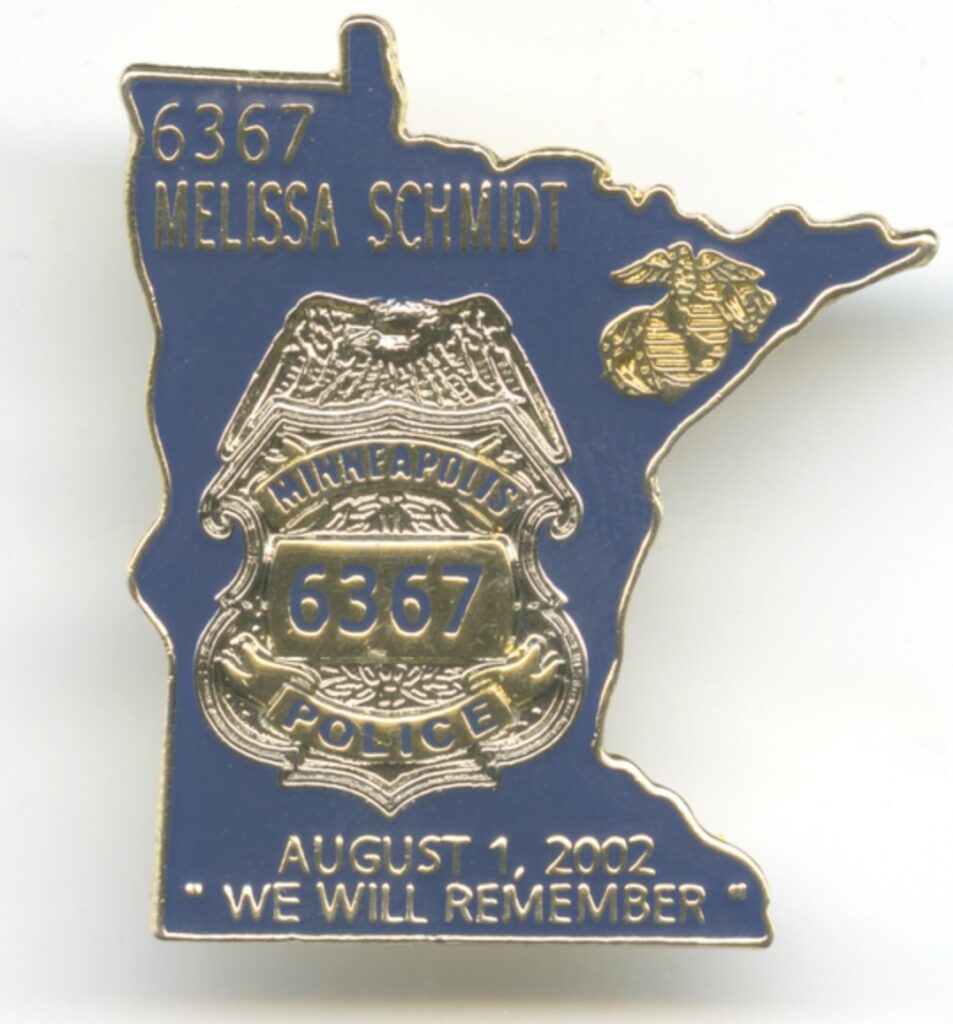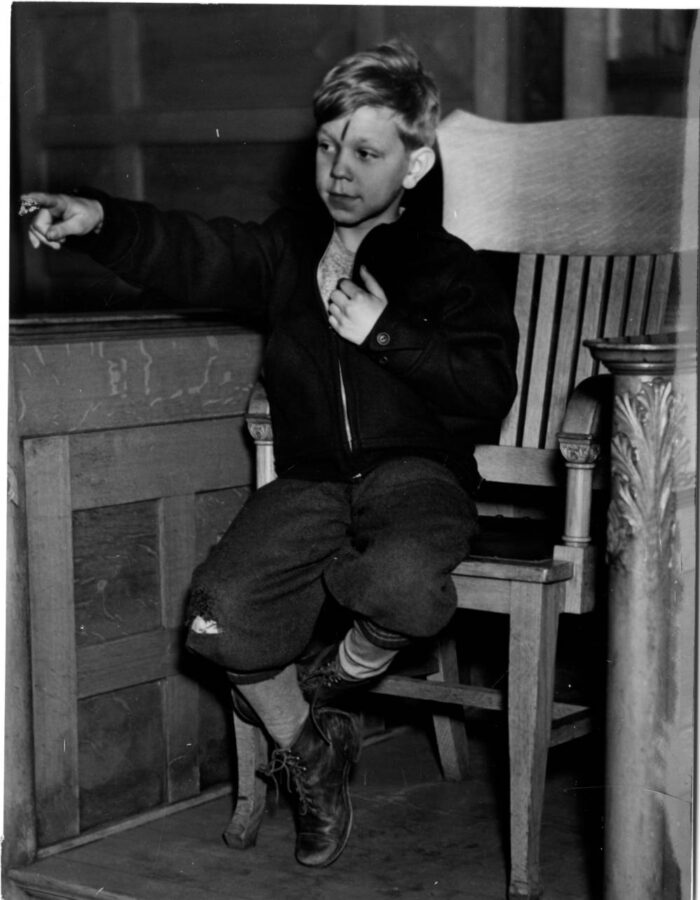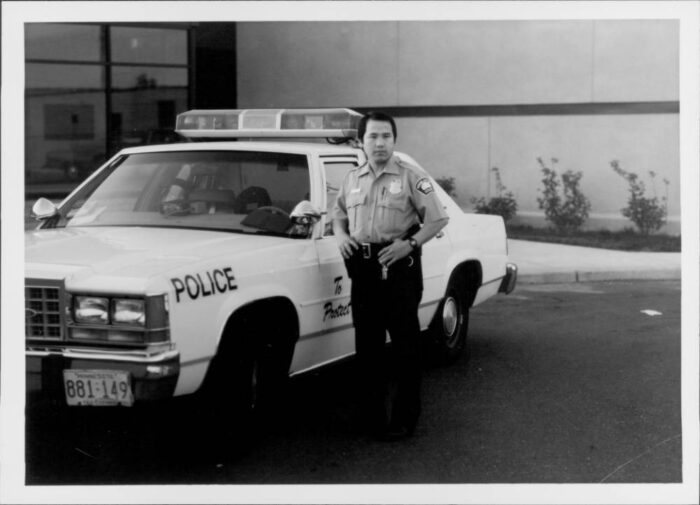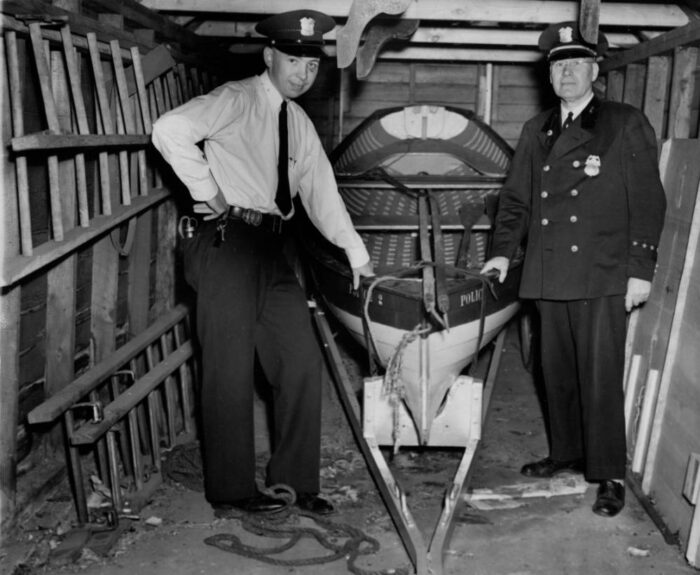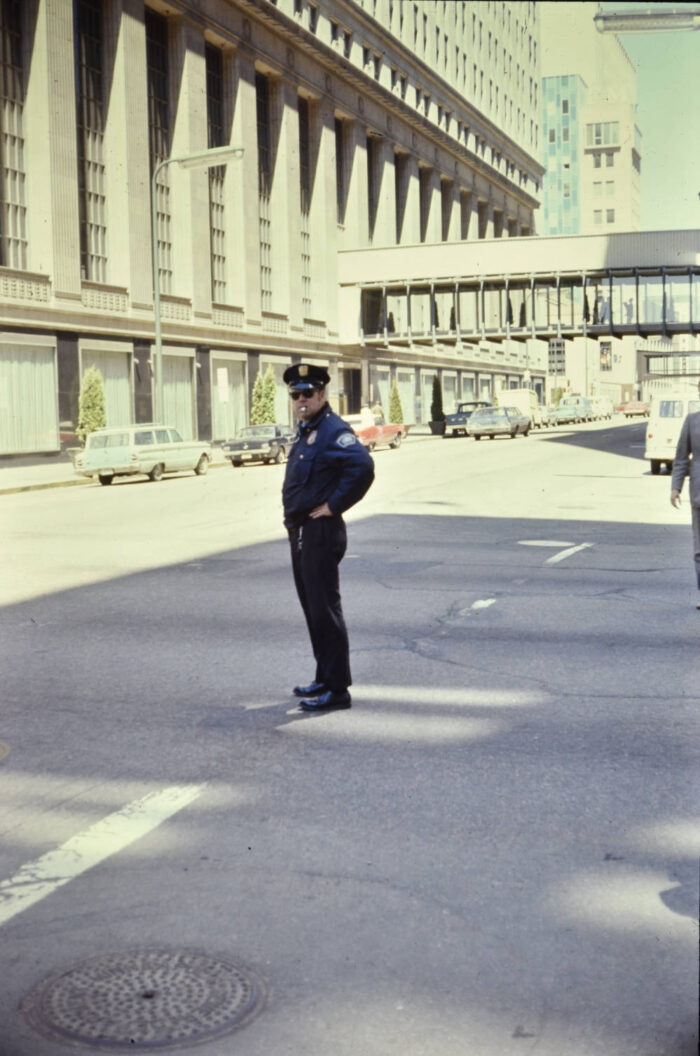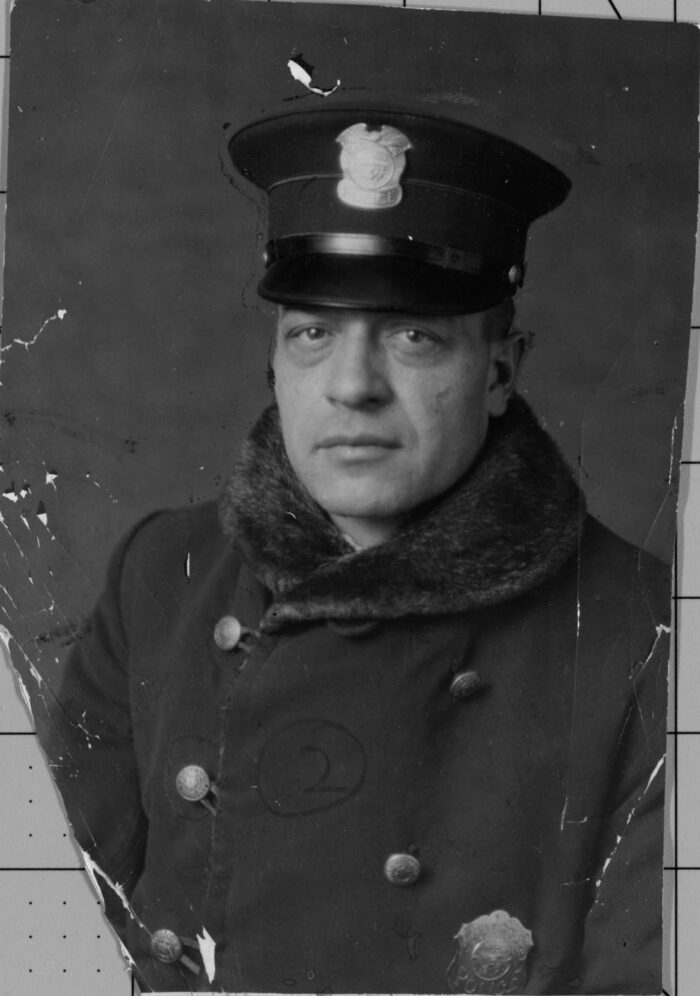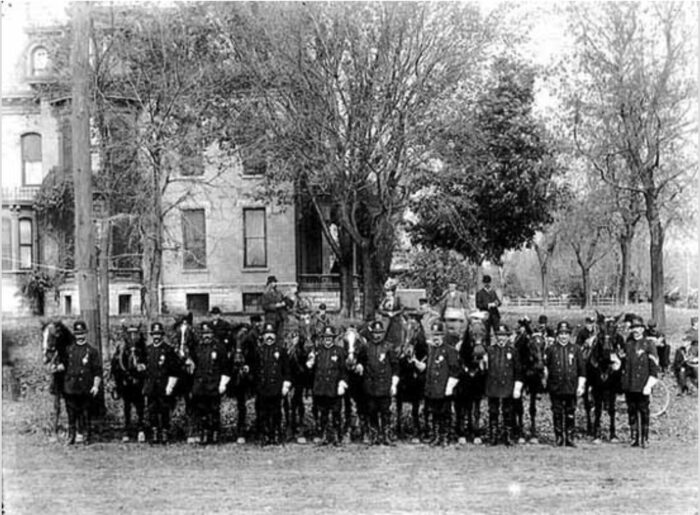END OF WATCH – AUGUST 1, 2002
Today we are thinking of Minneapolis Police Officer Melissa Jayne Schmidt who was killed in the line of duty on August 1, 2002.
Officer Schmidt was shot and killed after she and her partner responded to a call shortly after 7:00 pm reporting a woman with a gun at Horn Towers.
Upon arrival, the officers made with contact with the 60-year-old suspect. While Officer Schmidt and her partner were questioning her, the woman said that she needed to go to the bathroom.
Officer Schmidt escorted the woman to the public restroom in the lobby of Horn Towers. While in the restroom, the woman produced a handgun and opened fire, striking Officer Schmidt in the abdomen below her vest. Officer Schmidt was able to return fire and killed the suspect.
Officer Schmidt served with the Minneapolis Police Department for more than 6 years and was assigned to the Public Housing Unit. She was 35 years old at the time of her death.
Officer Schmidt had previously served in the United States Marine Corps in MCAS Iwakuni, Japan, and the U.S. Foreign Interests Section in Havana, and in Cuba as a Marine Security Guard.
Officer Schmidt was survived by her parents and her brother.
Today we remember Officer Schmidt and extend our sympathy and condolences to her family and friends and to all who miss her.
This blue enameled lapel pin is inscribed with the text “6367/ MELISSA SCHMIDT/ AUGUST 1, 2002/ WE WILL REMEMBER”. This pin was presented to Minnesota Governor Tim Pawlenty during a Law Enforcement Memorial Association luncheon in 2002. Photograph of pin courtesy of the Minnesota Historical Society
